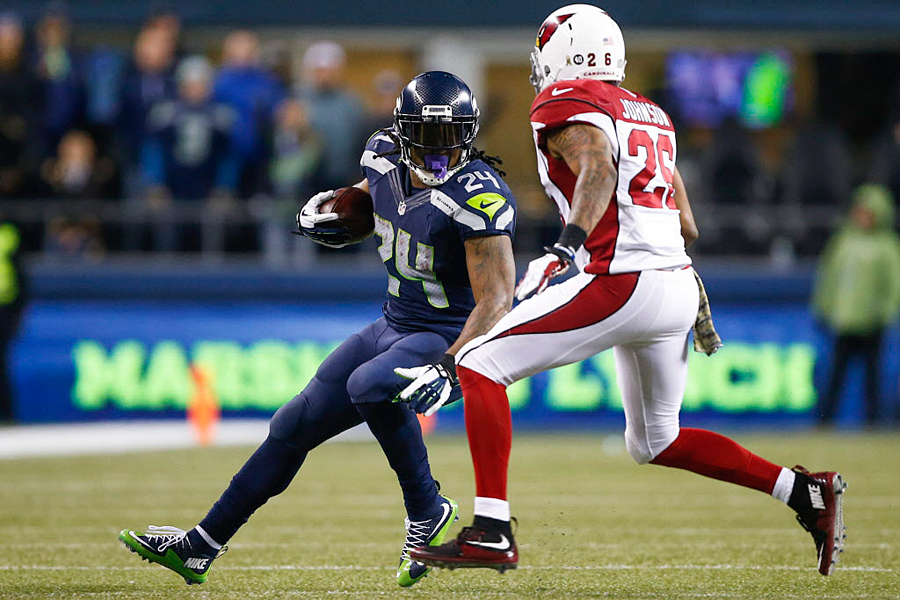Is the NFL's Marshawn Lynch's early retirement a trend?
Loading...
Marshawn Lynch, or “Beast Mode,” was one of the most productive running backs in the National Football League (NFL) over the past five years. He ranked third in rushing yards, second in first downs, and first in rushing touchdowns.
It came as a shock, then, when the 30-year-old Super Bowl winner announced his retirement, first by posting a picture on Twitter of a pair of cleats hung on a telephone wire in February, and confirming it in a “60 Minutes” interview that will air Tuesday night.
"I'm done. I'm done. I enjoyed my time playing. Now it's time to watch my cousins do their thing," Mr. Lynch said in the interview. "I'm retired. Is that good enough? Which camera do you want me to look into? This one? I'm done. I'm not playing football anymore."
Lynch is one of nearly two-dozen players at or under 30 to retire this offseason. As The Christian Science Monitor’s Mark Sappenfield wrote in March of last year, the NFL has a Chris Borland problem, referring to the 24-year-old who retired because he feared the risks of “banging [his] head” for a living. With more information going public about the link between football and long-term brain damage, a shift is underway among some of the league’s best to walk away from the game once they earn their millions.
“It’s too early to say it’s a trend. [But] a pattern is developing,” George Koonce, who played in the NFL for nine years and co-authored “Is There Life After Football?,” tells the Monitor in a phone interview. “Players have more information today than at any point in time combined. You’re seeing decisions being made that seem unorthodox or knee-jerk. But those decisions are well thought out.”
Known for his reluctance to speak to the media, Lynch didn’t explain why he chose to retire. In 2015, he was nagged by injuries. Though he signed a two-year contract extension through 2017, $19 million of that amount wasn’t guaranteed. His motivations could have been chronic injuries, money, or a combination of both.
Other NFL stars have at least indicated that long-term brain damage such as chronic traumatic encephalopathy (CTE) weighed heavily on their decisions. Besides Mr. Borland, it has been speculated that D’Brickashaw Ferguson, the fourth overall pick in the 2006 draft, retired at least in part out of fear of CTE.
In the violent sport of football, injury concerns among NFL players aren't new. For decades, players have spoken about the abuse their bodies take. But recent studies have established a compelling link between head trauma among football players and degenerative brain conditions that lead to violence and depression.
“Now, when players retire, there are a lot of questions about what might be motivating those decisions, or thoughts about how health issues might have motivated those decisions,” Thomas Oates, a University of Iowa professor who has written extensively on the NFL, tells the Monitor. “Even if players don’t mention it, the public is reading more and more about it.”
Jim Holstein, a Marquette University professor who wrote “Is There Life After Football?” with Mr. Koonce, agrees that players and the public know more about the dangers of football than ever. He just isn’t sure how much most players are affected by it.
“I don’t think it’s a cliché to say they love the game,” Dr. Holstein tells the Monitor. “They love to be part of the entire NFL experience. They are committed to the violence and the mayhem. It goes hand in hand with who they are.”
However, if players start to retire in waves as they enter their fifth season, when they renegotiate their rookie contracts, Holstein says that will be an indication of a shift in NFL culture.
“When we see players doing that more, instead of extending their careers, then maybe they are taking these health concerns literally,” he says.







